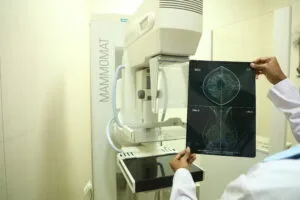Migraine – Treatment, Types & Symptoms

Introduction:
Migraine headaches are characterized by throbbing pain, typically on one side of the head. While they often endure for up to four hours, they can persist for days. Accompanying symptoms may include nausea, vomiting, sensitivity to light, and pain. Migraine headaches vary in presentation among individuals. This condition tends to run in families and can impact people of all ages, with onset typically between 10 and 45 years old, though onset may occur earlier or later. Women are particularly prone to experiencing migraine headaches.
Awareness about migraine:
Migraine and headaches are often misunderstood. Everyone has headaches occasionally if they occur occasionally then they can be a headache related disorder. Migraines are also very common. Approximately 1 in 7 adults are affected in the world due to migraine. It is common in women as compared to men. The only difference is hormonally driven. A right course of diagnosis is needed to know the exact cause of the headache.
Different types of headaches: (Migraine and other headaches)
- Migraine: A migraine is a type of primary headache disorder. It is a neurological condition which has symptoms and most commonly it causes a throbbing headache in one side of the head. They often get worse with light, sound, physical exercise. They usually last for hours or days.
- Tension type Headache: These are the headaches that are often caused because of tension, anxiety or stress in the neck or head.
- Sinus headaches: Caused due to inflammation in the sinuses and accompanied by facial pain, anxiety.
- Cluster headaches: These kinds of headaches occur in cycles or clusters. they cause extreme pain to one side of the brain may be accompanied by other signs such as watery eyes and nasal congestion.
- Hormone headaches: They are experienced by women during the menstrual cycle due to hormonal changes in the body.
- Rebound headaches: These kind of headaches happen due to physical exertion, such as exercise excessive physical work.
What causes migraine includes various triggering factors:
• Alterations in sleep patterns
• Smoking
• Stress
• Odours or perfumes
• Skipping meals
• Intense exercise
• Weather fluctuations
• Hormonal changes
Symptoms of migraine:
- Sensitivity to light
- Nausea
- Fatigue
- Visual aura
- One sided throbbing
- Sinus/ Flu symptoms
- Pulsating pain
- Neck pain
Migraine is divided into four phases:
- Prodrome: This will last for few hours to days
- Irritability
- Depression
- Yawning
- Difficulty in speaking
- Food cravings
- Sensitivity to light
- Problems in concentrating
- Nausea
- Difficulty in speaking
- Aura: This will last for 5 minutes to 60 minutes
- Visual disturbance
- Temporary loss of sight
- Numbness and tingling of body part
- Migraine attack: This phase lasts for 4 to 72 hours
- Throbbing
- Drilling
- Anxiety
- Depression
- Neck pain and stiffness
- Burning
- Giddiness
- Insomnia
- Postdrome: This phase lasts up to 24-28 hours post the migraine attack
- Lack of comprehension
- Fatigue
- Euphoric mood
- Depressed mood
- Inability to concentrate
The two major types of migraine are:
- Migraine without aura:
Headache that comes in stages. May experience nausea, fatigue, irritability and sensitivity to light and sound. Typically on a localized spot only on one side of the head.
- Migraine with aura:
Usually causes visual disturbances prior to initial migraine symptoms. May affect smell, touch, speech.
The following things can be done to avoid migraine:
- Get enough sleep
- Reduce stress
- Having healthy posture
- Getting regular exercise
- Having plenty of water
- Avoiding known dietary triggers
Diagnosis of migraine:
The International Headache Society gives a recommendation of 5,4,3,2,1 to diagnose migraine without aura.
- Having 5 episodes of more, each lasting for 4 hours to 3 days
- Having head with at least 2 of the qualities
- Pulsating
- Occurring on one side
- Causing moderate to severe pain aggregated by any activity
- Having additional 1 symptoms such as
- Nausea
- Vomiting
- Sensitivity to light
- Sensitivity to sound
- Migraine treatment entails:
- Ensuring adequate sleep; resting in a darkened room.
- Steering clear of migraine triggers like specific foods.
- Staying hydrated to prevent migraine attacks.
- Engaging in regular exercise.
- Documenting migraine occurrences.
- Considering acupuncture as part of migraine treatment.
- Employing stress management methods.
- Using medication under medical supervision.
- Seeking prompt treatment when headache causes are uncertain.
FAQ’s
- What are the symptoms of migraine?
Answer: The symptoms of migraine are:
- Sensitivity to light
- Nausea
- Fatigue
- Visual aura
- One sided throbbing
- Sinus/ Flu symptoms
- Pulsating pain
- Neck pain
- What is migraine?
Answer: A migraine is a headache that causes quivering pain usually in one side of the head. The headache can usually last up to four hours, but sometimes the pain can last till days. It may occur with symptoms such as nausea, vomiting sometimes accompanied with sensitivity to light and pain. Different people experience different symptoms of migraine.
- Steps can be done to avoid migraine?
Answer: The different steps to avoid migraine can be:
- Get enough sleep
- Reduce stress
- Having healthy posture
- Getting regular exercise
- Having plenty of water
- Avoiding known dietary triggers
- What are the different triggers for migraine?
Answer: The different triggers of migraine are:
- Changes in sleep patterns
- Smoking
- Stress
- Odor or perfumes
- Missed meals
- Heavy exercise
- Weather changes
- Hormonal changes
- What are the different types of headaches?
Answer: Migraine, Tension headache, Cluster headaches, Sinus headaches, Tension headaches, Rebound headaches and Hormone headaches.
- How do we manage migraine?
Answer: The different ways to manage migraine are:
- Get good sleep; try to lye down in a dark room.
- Avoid things that trigger migraine such as certain foods
- Stay hydrated to avoid migraine attacks
- Get regular exercise
- Maintain a record of migraine attacks
- Acupuncture for migraine
- Stress management techniques
- Take medication (Under doctor’s guidance)
- Seek early treatment when you’re not sure about the cause of the headache



